Badrinath in winter, standing sentinel at an altitude of approximately 3,133 meters in the Garhwal Himalayas of Uttarakhand, India, is one of the four most revered sites for Hindus, dedicated to Lord Vishnu. But when the temple gates, or kapat, close a profound ceremony typically held on the auspicious day of Bhai Dooj, a few days after Diwali the vibrant pilgrimage town gives way to a silence so deep it seems to predate human history. This is the authentic Winter in Badrinath, a season not for the casual tourist, but for the introspective seeker and the lover of the most dramatic, untouched Himalayan landscapes.
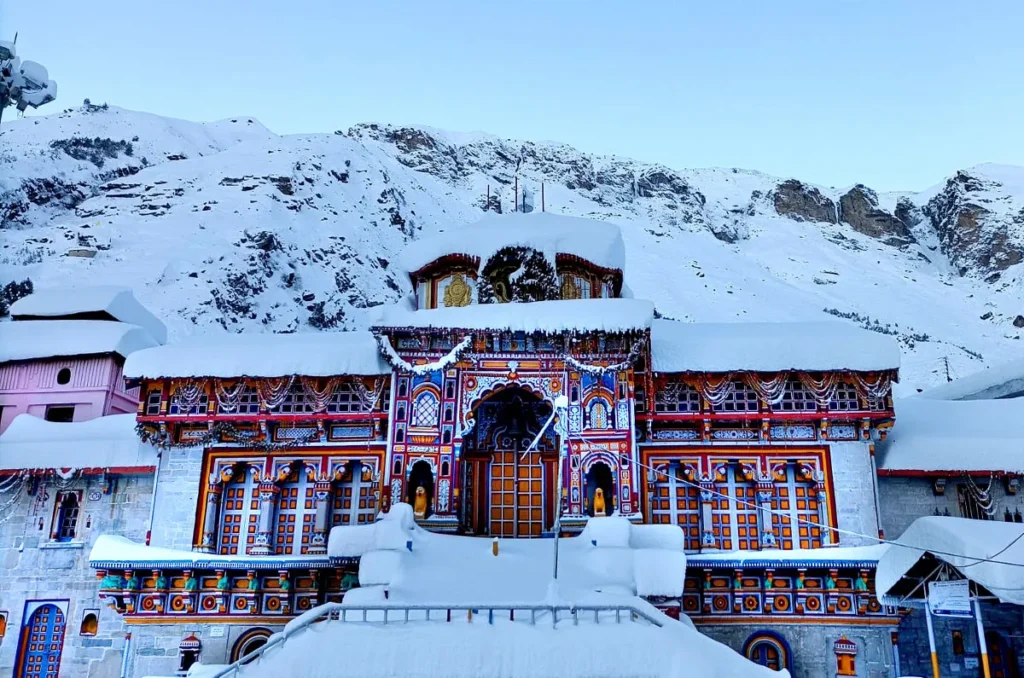
The Great Seasonal Migration: A Spiritual Continuity
The closing ceremony is not an ending, but a continuation. It is the single most defining event that dictates the nature of winter in Badrinath.
The Lord’s Winter Sojourn
On the closing day, after the final Maha Abhishek and Aarti, the Rawal (Chief Priest) and other temple officials perform a symbolic ritual. The sacred Akhand Jyoti (unbroken lamp of ghee) is lit, which is believed to burn for the entire six months that the temple is closed, tended to only by the Devtas (celestial beings) and Rishis (sages) who continue the worship in their subtle forms.
Following this, the Utsav Murti (a symbolic idol of Lord Badri Vishal) is carried in a magnificent, yet poignant, palanquin procession down the valley. This is not merely a logistical shift; it is the symbolic journey of the deity to His Winter Abode.
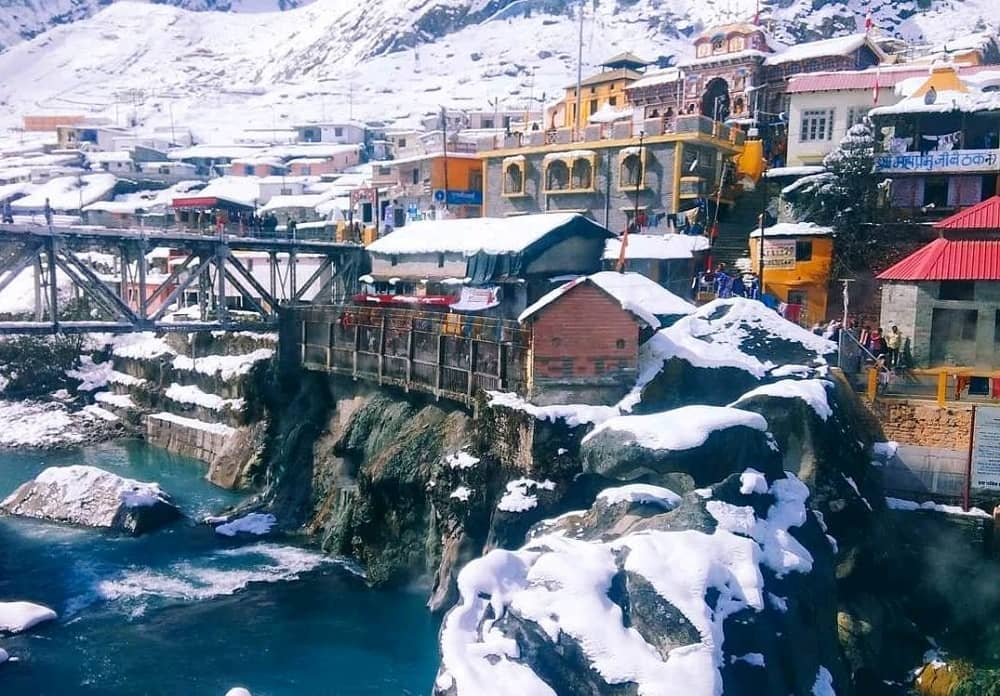
The Winter Seat: Narsingh Temple, Joshimath
The winter focus of devotion shifts approximately 50 kilometers down the road to Joshimath, also known as Jyotirmath, one of the four cardinal maths established by Adi Shankaracharya. Here, at the Narsingh Temple (Narasimha Badri), the Utsav Murti of Lord Badri Vishal is installed alongside the temple’s presiding deity, Lord Narsingh (the man-lion incarnation of Vishnu).
Joshimath, situated at a more manageable altitude of 1,875 meters, is where the ancient rituals and continuous worship of Lord Badrinath are performed throughout the winter. The Narsingh Temple becomes the true heart of the Badrinath faith during this time. For the faithful seeking darshan (blessing) of Lord Badri Vishal in winter, this temple is their ultimate destination. It offers a glimpse into an older, more intimate form of worship, shielded from the commercial bustle of the peak season.
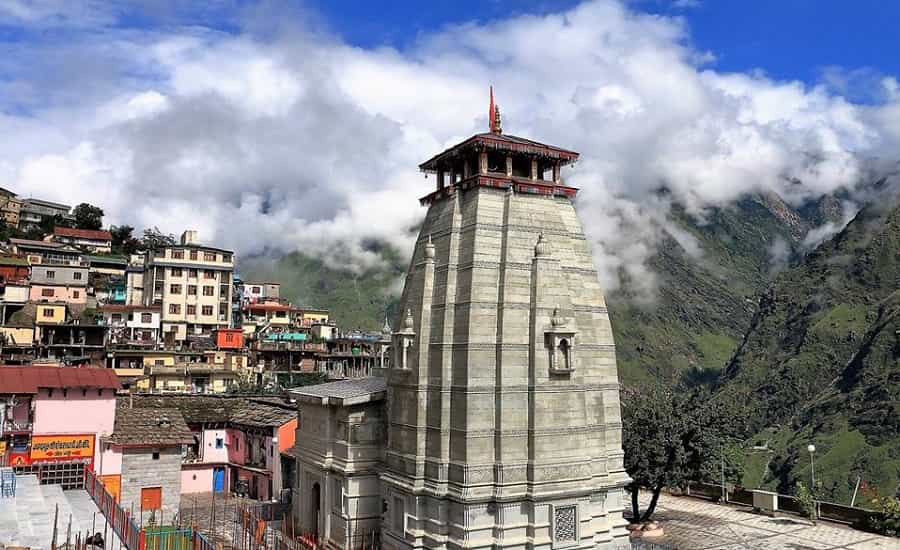
The Geographical and Climatic Transformation
The town of Badrinath itself becomes largely inaccessible. The mighty Himalayan winter descends with a fury and stillness unique to this high-altitude valley, nestled between the Nar and Narayan mountains.
Snow, Silence, and Seclusion
From December to March, Badrinath is buried under layers of heavy, crystalline snow, often reaching many feet deep. Temperatures plunge far below freezing, rendering the main valley uninhabitable for the civilian population. Most locals, including the priests and shopkeepers, migrate to lower-altitude villages like Joshimath, Pandukeshwar, and further down to Rudraprayag or even Haridwar. The entire area transforms into a white desert of profound silence, punctuated only by the whistle of the wind or the distant crack of a shifting glacier.
Travel to Badrinath town is virtually impossible during this period. The roads, already treacherous, are completely blocked by heavy snowfall and, at times, dangerous avalanches. The government authorities and local administration are focused on maintaining the main artery towards Joshimath and Auli, but the road past Govindghat, leading directly to Badrinath, is officially closed and unpatrolled. This is nature’s complete reclamation of the holy site.
The Unquenched Warmth of Tapt Kund
One of the most miraculous and enduring features of Badrinath is the Tapt Kund the natural hot sulphur spring located right next to the temple steps. While the Alaknanda River next to it freezes and the whole valley is encased in ice, the Tapt Kund water maintains its scalding temperature of around 45∘C to 55∘C (113∘F to 131∘F).
In the winter, with the temple gates locked and the priests gone, this geological wonder remains. It is a striking symbol of divine, fiery energy Agni existing steadfastly amidst the absolute dominance of ice. While it’s dangerous for pilgrims to reach the spot, the steam rising from the kund against the backdrop of snow-laden peaks is a spectacular sight, a reminder of the raw, untamed forces of nature that govern the Himalayas.
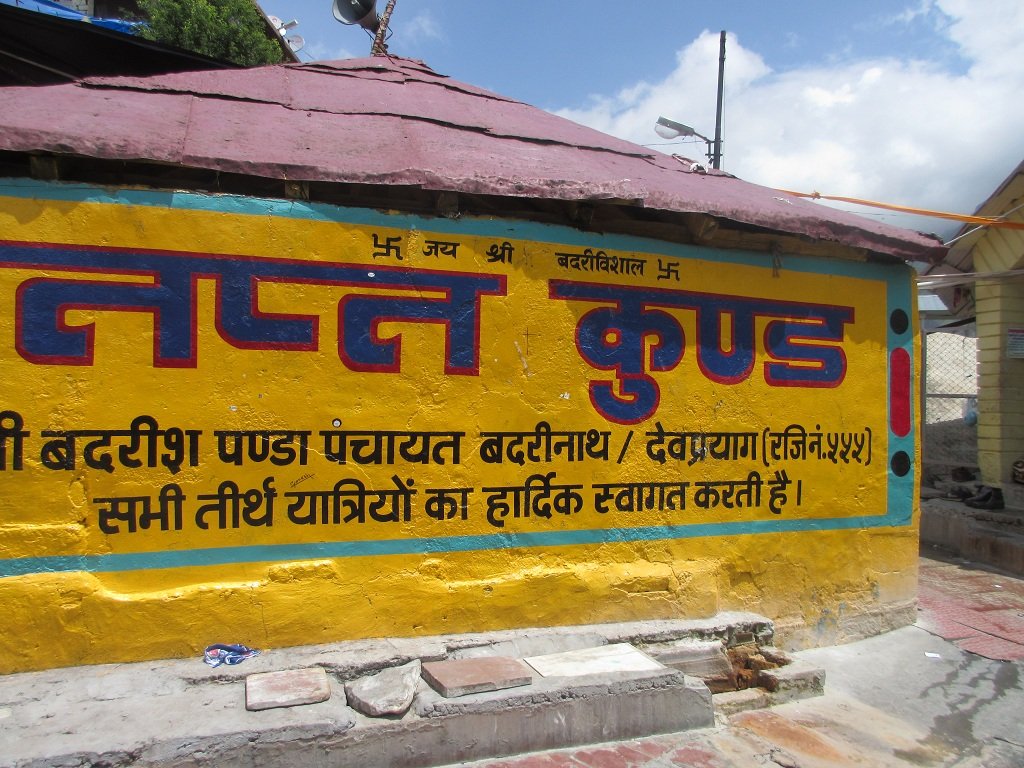
Nearby Winter Havens: A Tourist’s Perspective
While Badrinath proper is locked away, the immediate region offers unparalleled access to a different, adventure-focused form of Himalayan tourism.
Auli: India’s Skiing Paradise
The picturesque meadow of Auli, located just 16 kilometers by road (or a spectacular 4 km cable car ride) from Joshimath, becomes a major draw. Auli, often dubbed the ‘Mini-Switzerland of India,’ transforms into a world-class skiing destination. The slopes, surrounded by dense oak and conifer forests, offer breathtaking, panoramic views of Himalayan giants like Nanda Devi, Trishul, and Mana Parvat.
For the winter enthusiast, a trip to Auli offers a chance to experience the very essence of the Garhwal winter crisp air, deep snow, and thrilling activities like skiing and snowboarding. It provides the perfect blend of adventure tourism and spiritual proximity to the winter seat of Badrinath in Joshimath.
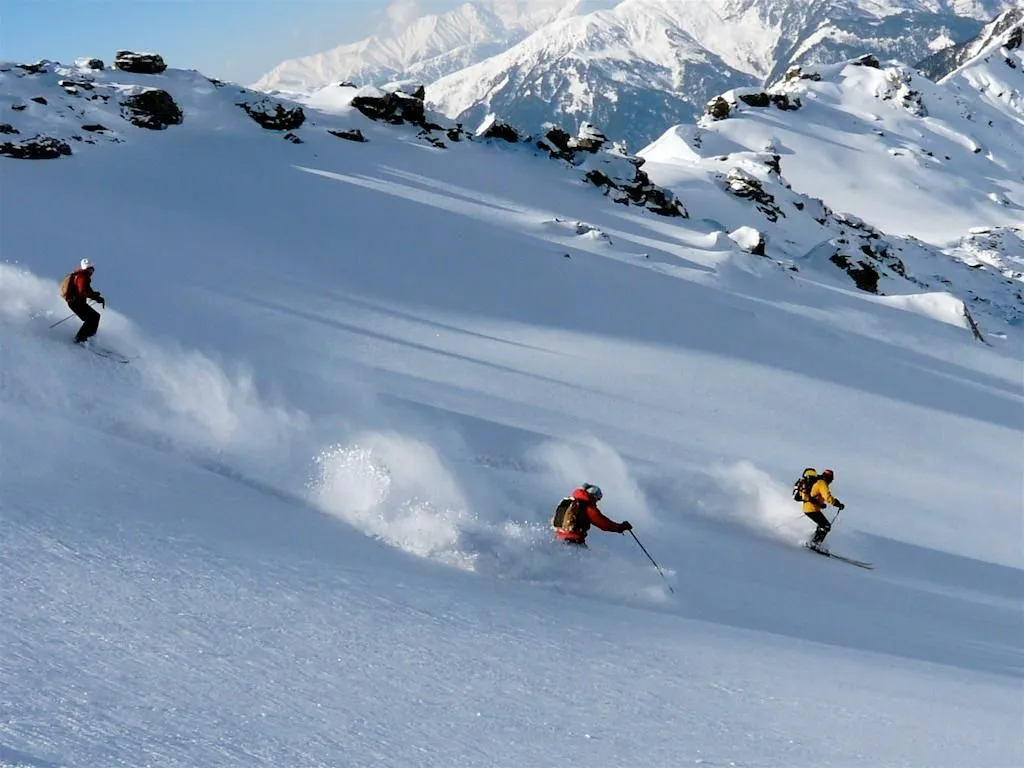
Mana Village: The Solitude of the Last Village
Mana Village, situated only 3 km from Badrinath, is officially the last Indian village before the Indo-Tibet border. In summer, it is bustling with tourists visiting Vyas Gufa, Ganesh Gufa, and the mighty Bhim Pul.
In winter, Mana is a ghost village. Its Bhotia inhabitants migrate entirely to lower regions. The motorable road is likely to be completely shut down by snow near Badrinath. The raw, mythological landscape the source of the Saraswati River, the towering peaks is left to the silence of the snow. Visiting this area requires permission, extreme preparedness, and often a trek by local guides, transforming a quick tourist stop into a challenging, yet rewarding, expedition into the pure wilderness.
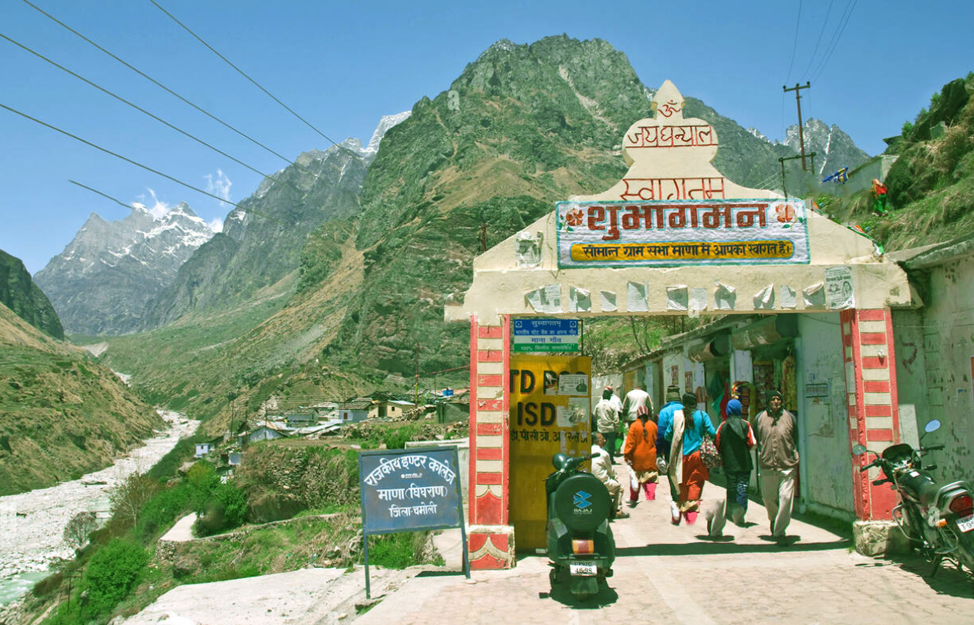
The Freshness of the Experience: Why Winter is Unique
The true freshness of the Badrinath winter experience lies in its authenticity and contrast:
- Spiritual Depth Over Commerce: Unlike the peak season, where the spiritual journey is intertwined with long queues, busy markets, and traffic jams, the winter worship at Narsingh Temple in Joshimath is intensely focused. It is a pure act of faith in a simple, cold, yet deeply reverent environment.
- Unmediated Natural Grandeur: The snow-capped landscape of Badrinath in winter is the Himalaya at its most formidable and majestic. The crowds are gone, and the mountains are revealed in their true, untamed splendor. The contrast between the steaming Tapt Kund and the ice-bound Alaknanda is a sensory and visual spectacle impossible to find in summer.
- A Test of Will and Faith: To even attempt to see the kapat of Badrinath in the snow, or to brave the elements for darshan in Joshimath, is an act of deep personal devotion. The journey itself is a meditative experience, requiring patience, respect for the elements, and a singular focus on the destination.
Planning a Winter Expedition: Logistics and Reality
A “Winter Badrinath” trip is fundamentally a trip to Joshimath, Auli, and the lower Panch Badri temples. Direct travel to Badrinath town is impossible and illegal due to road closures.
- Best Time for Winter Experience: December to March for heavy snowfall and the full winter effect.
- Travel Hub: Joshimath serves as the base. It has essential infrastructure, accommodation, and access to Auli.
- Safety: This is the most critical element. Snowfall is heavy, and roads can be blocked for days. Altitude acclimatization is vital, though Joshimath’s lower altitude helps. Travel must be done with local expertise, and all weather advisories must be strictly followed.
- Panch Badri: The winter period is an ideal time to complete the Panch Badri pilgrimage circuit, visiting the other four Vishnu shrines:
- Yog Dhyan Badri (Pandukeshwar – sometimes the initial stop for the idol).
- Bhavishya Badri (Joshimath – believed to be the future site of worship).
- Adi Badri (Karnaprayag – one of the oldest shrines).
- Vridha Badri (Animath).
In conclusion, Badrinath in winter is a pilgrimage of the heart, not the feet. It is a fresh narrative of the ancient Char Dham: a story of a deity’s descent to a warmer home, a town’s surrender to the snow, and a traveler’s quest for solitude amidst the world’s grandest mountains. It offers a deeper, more genuine connection to the spiritual and natural forces that make the Himalayas the sacred, awe-inspiring place they are. The snow-laden quiet of Badrinath is the voice of the mountains pure, unadulterated, and profoundly powerful.
Frequently Asked Question (FAQ)
The Badrinath Temple: Status and Closure
No. The Badrinath Temple (Badri Vishal Temple) closes its doors (kapat) to the public around the auspicious festival of Bhai Dooj (October/November) and reopens on Akshaya Tritiya (April/May). The main temple remains closed for approximately six months due to heavy snowfall and extreme cold.
Where is Lord Badrinath worshipped during the six-month winter closure?
The symbolic idol (Utsav Murti) of Lord Badri Vishal is ceremoniously moved in a grand procession to its Winter Abode at the Narsingh Temple (Narasimha Badri) in Joshimath. All the formal rituals and worship continue here during the winter months.
Can I visit the actual Badrinath town during the peak winter months (December to March)?
Generally, no. The road leading to Badrinath town, particularly beyond Govindghat, is officially closed and often impassable due to extremely heavy snowfall and the risk of avalanches. Most shops, hotels, and local inhabitants also migrate, making accommodation and essential services non-existent.
What is the spiritual significance of the temple closure and the shift to Joshimath?
The closure is not an abandonment, but a continuation. It is an ancient tradition where the deity symbolically descends to a lower, more accessible altitude so that devotees can continue their worship. It is believed that during the six months of closure, celestial beings (Devtas) and ancient sages (Rishis) perform the worship at the main Badrinath temple site.
What are the typical winter temperatures in Badrinath and Joshimath?
Badrinath Town (Closed): Temperatures plummet well below freezing, often ranging from −10∘C to −15∘C and sometimes lower. Heavy snowfall is guaranteed.
Joshimath (Winter Abode): The climate is cold but survivable, with temperatures typically ranging from 0∘C to 10∘C during the day and dropping below freezing at night. Occasional snowfall occurs but is manageable.
Do the natural hot springs, the Tapt Kund, remain hot in the Badrinath winter?
Yes, the Tapt Kund is a natural geothermal spring and maintains its high temperature (around 45∘C to 55∘C) year-round, regardless of the freezing climate. The steam rising from the Kund amidst the snow is a spectacular sight, symbolizing the enduring presence of Agni (fire god).
Is it safe to drive to Joshimath and Auli in winter?
The route to Joshimath is maintained, but extreme caution is required. Heavy woolens, a well-maintained vehicle, and an experienced mountain driver are essential. Travel during heavy snowfall is risky. Auli is accessed from Joshimath via the famous ropeway (cable car) or a narrow road, and conditions should be checked daily.
What are the primary tourist activities and attractions available near Badrinath in winter?
The focus shifts to the Joshimath-Auli axis:
Pilgrimage: Darshan at the Narsingh Temple (Lord Badrinath’s winter seat).
Adventure: Auli transforms into India’s premier skiing and snowboarding destination, offering lessons and chair lifts.
Trekking: Treks to Gorson Bugyal (a snow-covered alpine meadow) start from Auli.
Culture: Visiting the other Panch Badri temples, such as Yog Dhyan Badri in Pandukeshwar.


